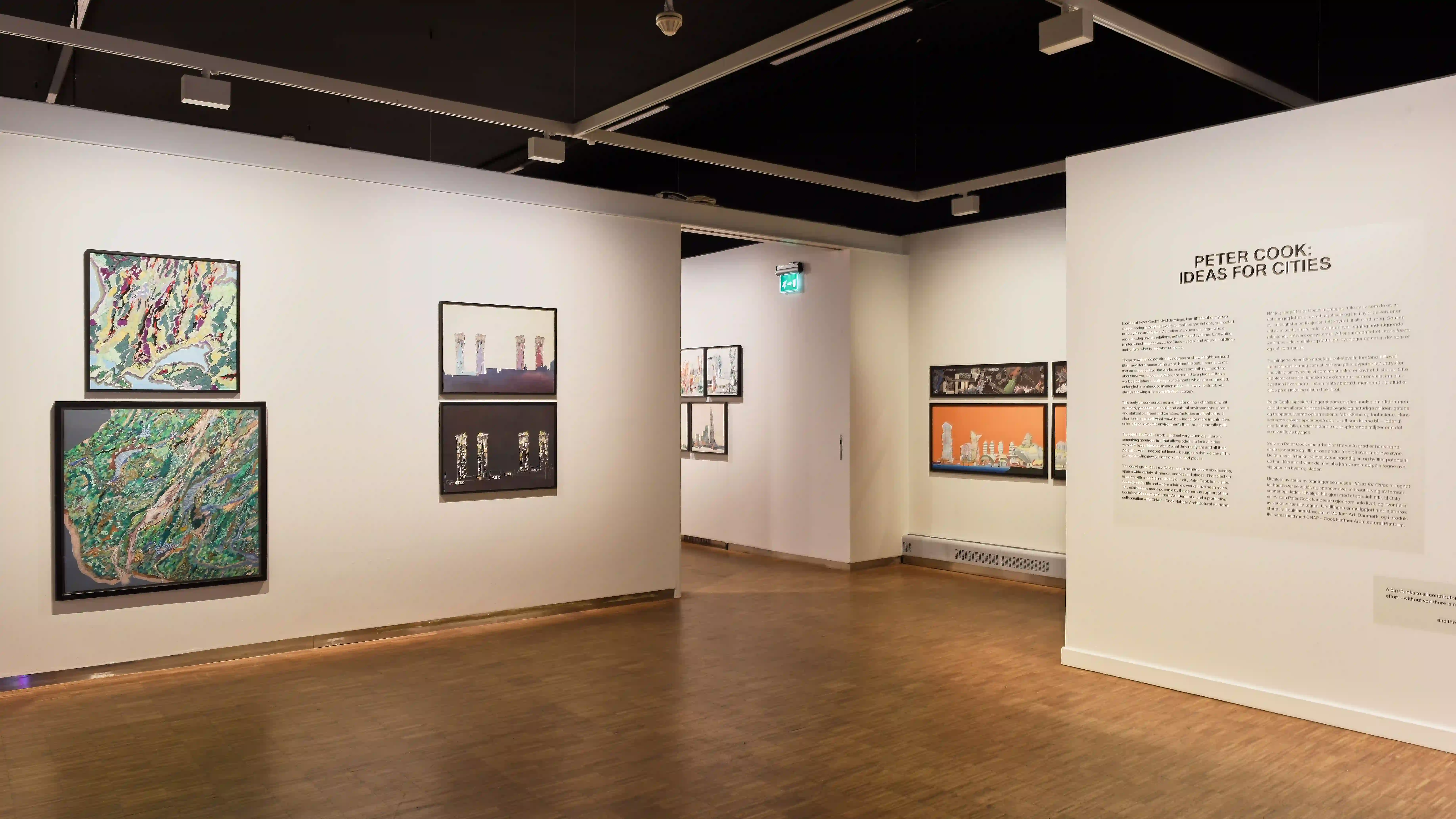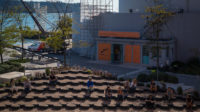The Oslo Architecture Triennale Seeks Out Good Neighbors

Team Transborder's submission for the development of Grønlikaia, the last major harbor-transformation area just east of Oslo's center. Photo courtesy Hav Eiendom

The Triennale's main exhibition, subtitled (Re)forming Communities, takes over the former Munch Museum. Photo © Are Carlsen

Also at the former Munch Museum, Ideas for Cities displays drawings by Archigram founder Sir Peter Cook. Photo © Are Carlsen



The discovery of petroleum resources in Norway just over 50 years ago propelled the nation of 5 million people to the top of the list of the world’s richest countries. And Norwegians have enjoyed a high standard of living ever since.
It’s curious, then, that the theme of this year’s Oslo Architecture Triennale is neighborhoods, particularly since—unlike concurrent triennials and biennials that take a global perspective—the exhibitions here focus on the Nordic context.
But the Triennale’s curator, Danish-born Christian Pagh, argues that the quality and diversity of neighborhoods is under threat by contemporary models of urban production and ownership. Building on the groundwork of past Oslo Triennales (the festival launched in 2000), his “mission” was to produce a type of urban lab, a platform “for genuine cross-pollination,” he says, to combat generic forms and spaces. “When one can shop, socialize, and date online, one doesn’t need a corner store, playground, or local café. But there is a deep longing for more sustainable, inclusive, and collective ways of living.”
Pagh’s “lab” unfolds in the former Munch Museum, a quirky 1963 building by architects Gunnar Fougner and Einar Myklebust. (The fate of this little neighborhood gem is still unclear, since the collection moved into Estudio Herreros’s museum tower on the waterfront last year.) With the scale of neighborhoods in mind, the exhibition revolves around five perspectives: Understanding Places, Social Infrastructure, Our Streets, Naturehood, and Reforming Systems.

Peter Cook's drawing for the Waterland area of Oslo (2006). Photo courtesy CHAP_Cook Haffner Architecture Platform
Of note is the large display of competition boards of future scenarios for Grønlikaia, the last major harbor-transformation area, rising out of the fjord just east of Oslo’s center. Sixteen interdisciplinary teams submitted proposals for five subdistricts, comprising over 2 million square feet of development.

Mad Arkitekter refurbished and added to a 1950s office building with recycled materials, including metal facade panels and leftover windows from another project. Photo © Architectural Record
A delightful throwback within the galleries is Ideas for Cities, an exhibition of extraordinary drawings, including work from the Plug-In City series (1960s) and Oslo Towers (1980s), by none other than Sir Peter Cook. The 86-year-old Archigram founder, who has twice taught at the Oslo School of Architecture and Design, was present at the opening and for a talk.
Collateral events continue to occur throughout the city, including a visit to a groundbreaking reuse project by Mad Arkitekter. The firm’s Oslo office refurbished and significantly added to a nondescript 1950s office building threatened with demolition. In this project, 70 percent of the materials used in the renovation and new build are repurposed, including reused bricks, steel, concrete slabs, and metal facade panels, and leftover windows from a different building site.
At the National Museum - Architecture, Coming into Community considered architecture through the queer gaze; for instance, how the aim of the post-WWII housing policy to provide secure homes for nuclear families excluded gays. The poignant exhibition marks the passing of 50 years since the decriminalization of homosexuality in Norway.
Read more about Fall 2022 architecture festivals








